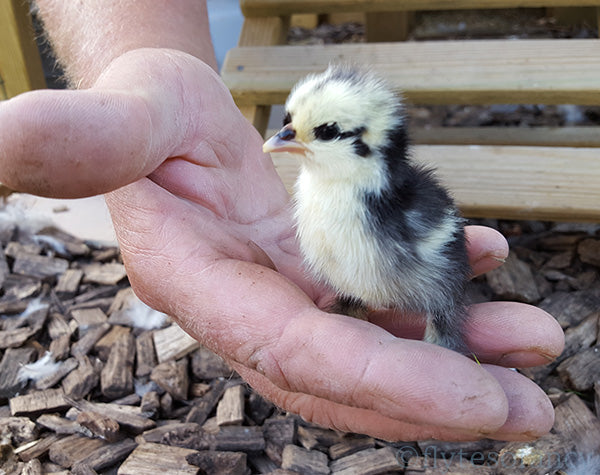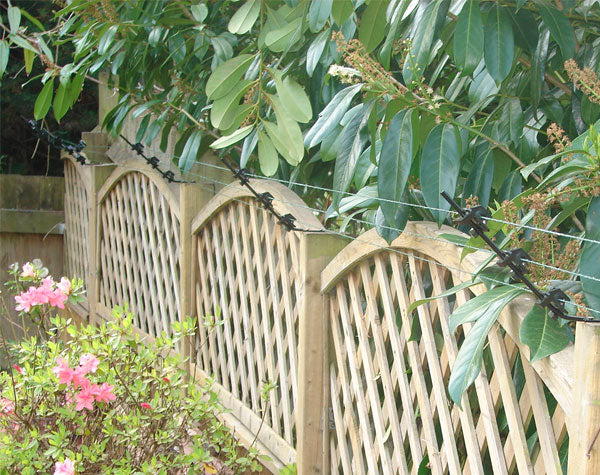Caring for Ex-Battery Hens by Jane Howorth of BHWT
Jane Howorth MBE, the founder of the British Hen Welfare Trust, writes for Flyte so Fancy about preparing for your rescued hens.
There's very little that beats the feel-good factor of using your own produce to prepare meals for yourself and your family, especially when that includes going out to the garden and gathering eggs from your own chickens - and it's a double feel-good factor when those eggs are gathered from re-homed commercial hens that have been saved from a trip to the abattoir.

At the British Hen Welfare Trust, we have re-homers approaching us from all over the country and from all walks of life, ranging from first-time chicken keepers, to those with years of experience, and ranging from suburban back gardens through to people with acres of paddock.

With around 16 million hens currently living in cages in the UK alone, each bird we re-home is amazingly fortunate, but that does not make the transition from cage to back garden any less bewildering for them.
The good news is, whether you are a novice keeper or have clocked up years of experience, there are some simple steps you can take to prepare for your new birds which will help them settle into their new life as quickly as possible.
The first thing to consider is the amount of space available to you, both outside space in the run and space inside your hen house, as it is important your hens have enough accommodation to allow them to sleep comfortably at night and to ensure there is room inside to shelter from inclement weather.

I always advise to buy a house for more hens than you have. For example, when a house is described as suitable for eight, it will comfortably accommodate six, and of course, the house must be weatherproof and well ventilated, whatever the time of year or conditions outside.
Novices also need to ensure that their set-up is completely protected from the fox, as he will find any gap or low point in your protection, with horrible consequences.
As we approach each autumn, I am always asked if it is necessary to provide heating for hens and, while the most bald may benefit from a heat lamp during persistently freezing weather, in general, I consider it a last resort as most birds will cope well with the cold, provided they have protection from the wet and wind.
I also like to make our re-homers aware in advance of the birds' general lack of fitness. This is not to be confused with the birds being ill, as they are almost always in a perfectly healthy condition.
From a practical perspective, it is not in the farmers' interests to have sick birds that are not producing eggs, although it remains a common misconception that ex-bat hens are unhealthy.
This lack of fitness means that hens may not be able to roost (and some never do) as their leg muscles are not strong enough initially. It is important to allow them time to rehabilitate at their own pace and I definitely do not recommend placing birds on perches in their early days, as it can lead to damaged legs when they jump down.
Let them rehabilitate at their own pace and general fitness is usually restored after a couple of weeks.

Some re-homers find that battery hens can initially be nervous, and they will generally need a little TLC for a couple of weeks as they adjust to their new surroundings.
All that is needed is patience and to carry out routine tasks, such as cleaning, in a calm and quiet manner. Talking softly to the hens during this time also helps speed up the process of them becoming confident and friendly pets.
Feeding is an important consideration as they will have been fed on a commercial layers mash in the farms, so it is essential to continue with similar feed available for at least four-six weeks.

I strongly recommend using the Smallholder Layers Crumble. This feed provides the best possible nutrition for re-homed hens, encouraging both feather growth and supporting egg production.
My recommendation is also supported by independent research which shows the high nutrient levels can help newly established flocks settle more quickly too.
Layers Crumble is a smaller granola-like version of the Layers Pellets, and can gradually be incorporated into their feed in an increasing ratio over a period of weeks, birds can remain on a Crumb diet, but generally, pellets are considered more convenient to use.
For people who have existing chickens, it is vital that you have space and facilities to be able to keep the new hens separate for a while. The length of time will vary on the number and condition of the birds being merged as well as other factors.
We recommend around 2 weeks unless there is a cockerel present, in which case they will need at least 4-6 weeks. We offer bespoke advice on merging hens as everyone has differing circumstances to ensure the birds get off to a good start, so always ask us when you make a reservation.

There is a lot to consider when you take on, or add to, your own chickens, and while it is a commitment that people should be prepared for, the rewards are also very high.
Domestic poultry keeping is one of the fastest-growing hobbies in the UK, and understandably when you consider the many benefits, including the satisfaction of producing your own eggs at home, educating your children on the responsibilities of having animals, and perhaps the greatest of pleasures in stealing a quiet five minutes to sit and watch the hens go about their day - a guaranteed stress buster!
Jane Howorth MBE, British Hen Welfare Trust.
Contacting The British Hen Welfare Trust

The British Hen Welfare Trust can be contacted by the following means.
By Telephone on: 01884 860084
By E-mail: info@bhwt.org.uk
And through their website: British Hen Welfare Trust Site



